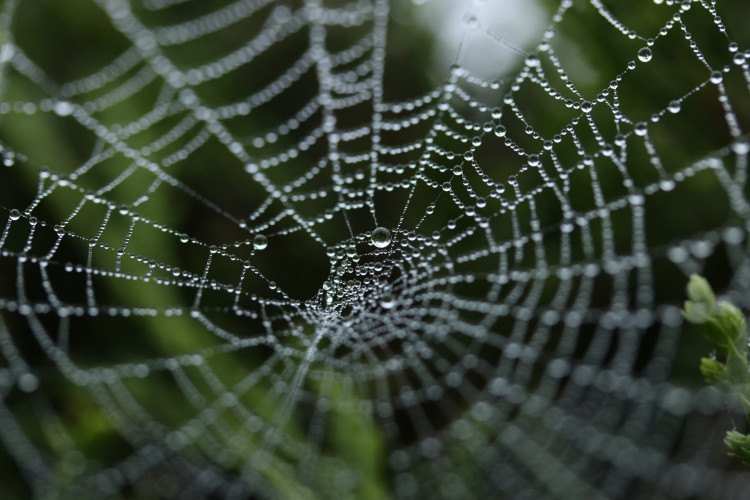When you walk through a sticky spiderweb, it may appear to be a nightmare, but it turns out to be a fantastic, organic commodity for measuring particulate contamination in the urban atmosphere.
Scientists used an interesting way of detecting this insidious air pollution problem in a new study, courtesy of something utterly natural and yet fairly widespread - spiderwebs.
"Spiders are found all over the world, including in cities," organic geochemist Barbara Scholz-Böttcher from the Carl von Ossietzky University of Oldenburg in Germany said.
"Their sticky webs are an ideal trap for anything that floats through the air."
Rebecca Süßmuth, a student researcher from Oldenburg, Germany, gathered spiderwebs tied to street-side bus stops as part of an experiment (with the webs situated about 2 meters or 6.5 ft off the ground).
When the researchers examined the web samples in the lab, they looked for several distinct types of plastic polymer formations; sure enough, the tests confirmed microplastics had attached to the webs.
"All the spiderwebs were contaminated with microplastics," co-author Isabel Goßmann, who worked on the research as part of her Ph.D. thesis, said.
According to the findings, microplastic contamination captured in spider webs can account for up to 10% of the total weight of the web and is composed of a variety of microplastics.
According to the researchers, around 90% of the debris was variants of PET (polyethylene terephthalate), with C-PET being the major polymer overall, likely produced from textile fibers.
Another source of microplastics was finely ground tire wear particles (TWP), which break off the outer part of tires during braking and acceleration and were expected to be detected in large quantities given the web collections' roadside position.
TWP rubbers are not technically plastics, but because of their synthetic origin, they are increasingly being included in definitions of microplastic contamination, according to the researchers.
Even if spiderweb sampling isn't as novel as you may assume, the findings serve as another sobering reminder of the pervasiveness of microplastic contamination. At the very least, we've uncovered a clever and inexpensive technique to help monitor the situation.
Spiderwebs have been employed for environmental testing reasons for at least 30 years, according to the scientists, but this is the first time they've been analyzed for microplastics, and these naturally occurring traps didn't disappoint.
"The sampling is simple and no special sampling devices are necessary," the researchers write in their paper.
The findings are reported in Science of the Total Environment.






